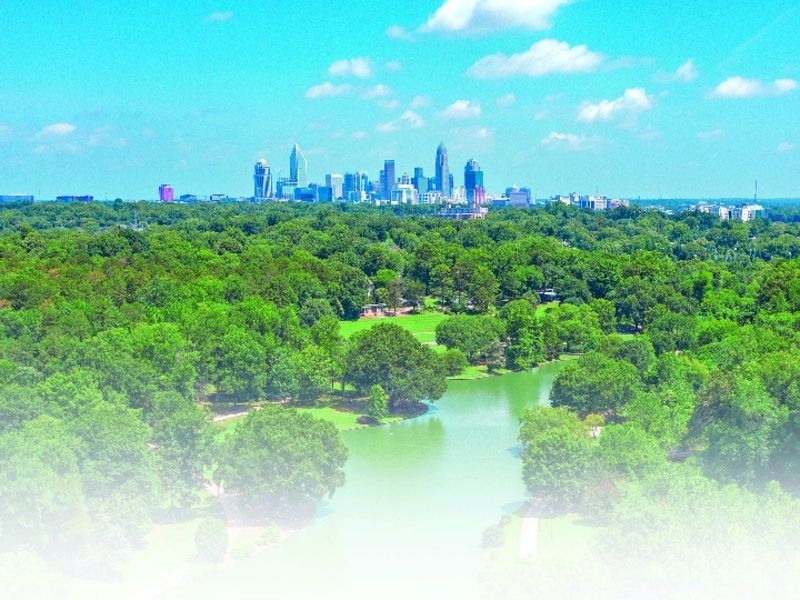
Unlike neighboring states in the Southeast, North Carolina does not have an auto assembly plant, although it has come close to landing one or two in recent years. A site near Greensboro, N.C., was the runner-up for the Toyota-Mazda joint venture assembly plant that ultimately went to Huntsville, Ala. The state also pitched Tesla for its truck plant that ended up in Austin, Texas, this year.
North Carolina officials are determined to play a larger role in the auto industry, and one key step toward getting there is identifying and designating large, readily available industrial tracts of real estate known as certified megasites. In recent years, the state has assembled a number of certified megasites that, if called for, could be turned over to an automaker to accelerate construction of a major plant, said Chris Chung, CEO of the Economic Development Partnership of North Carolina. Chung, 44, discussed megasite certification with Staff Reporter Jack Walsworth. Here are edited excerpts.
Q: How do you define a certified megasite?
A: Conceptually, a megasite is one that’s capable of accommodating very large-scale, typically advanced-manufacturing, users. Some places will probably say that’s 500 acres; others will say that’s 1,000. Other places may even say 2,000.
We clearly look at the size of the acreage; we look at critical infrastructure, like rail service, which would be a given if you’re going to be accommodating traditional automotive assembly activity. Most importantly, we look at the intent, the vision, the focus of the ownership of that site or the community that’s taken a role in preemptively developing it for a potential user.
“Certified” is a lot easier to define. The definition varies depending on which state or economic development group you’re talking to. But we have a North Carolina certified sites program.
What does North Carolina’s certification entail?
It has more than 30 different criteria — everything from having completed an environmental study, geotechnical studies and topographical maps and analysis. And you want to have good aerial photography. All of these things are designed to assure a company that their development timetable will be much shorter if they pick that site because a lot of this has been done preemptively.
How many certified megasites does the state have?
We’re in a pretty good place right now. Whether they’ve received certification or not, we’ve got seven very credible megasites that are more than 1,000 acres that can accommodate large-scale advanced-manufacturing users.
How challenging is the process of assembling such a site?
It’s not so hard to go through the process. It’s more a question of, does your site have the combination of features that would win the attention of a company that’s looking? Basically, that means it’s sitting on a confluence of utilities and infrastructure; it’s sitting reasonably close to a transportation corridor; it has rail service; and it’s got topographical features that are conducive for development. So to some extent, it’s about identifying those specific parcels of land, whatever the size.
It’s harder when you’re talking about 1,000 acres or more and identifying those parcels of land that carry all those features. If you can find that, then going through certification is a matter of documentation. It’s a matter of preemptively paying for the information that a potential user is going to insist on having, like geotechnical studies and environmental studies.
How will this effort help North Carolina attract a major auto industry project?
We know that a site’s real estate is just one part of the multifaceted decision for an automotive company to choose where to put new production capacity. But it’s certainly one you can’t skip over. Companies can’t make cars virtually. They need a physical environment, a site to build the factory. You’ve got to take into account work force, the quality, the cost and the trainability. You’ve got to consider the general business climates, issues like cost of energy, tax rates, construction costs and wages. And incentives are certainly part of the equation when you’re competing for that type of investment.
But I will say that while real estate is just one part of that decision, it was historically an area where North Carolina did not have a lot of good options as recently as 10 years ago. It had a difficult time cobbling together the kind of sites and proving that it was ready for what a company was looking for.
But thanks to a lot of different organizations across the state that have partnered, pooled resources, preemptively optioned land and started working to bring infrastructure there, we’ve really gotten to the point of now having seven credible megasites that we could easily put in front of companies for something like an automotive assembly plant.